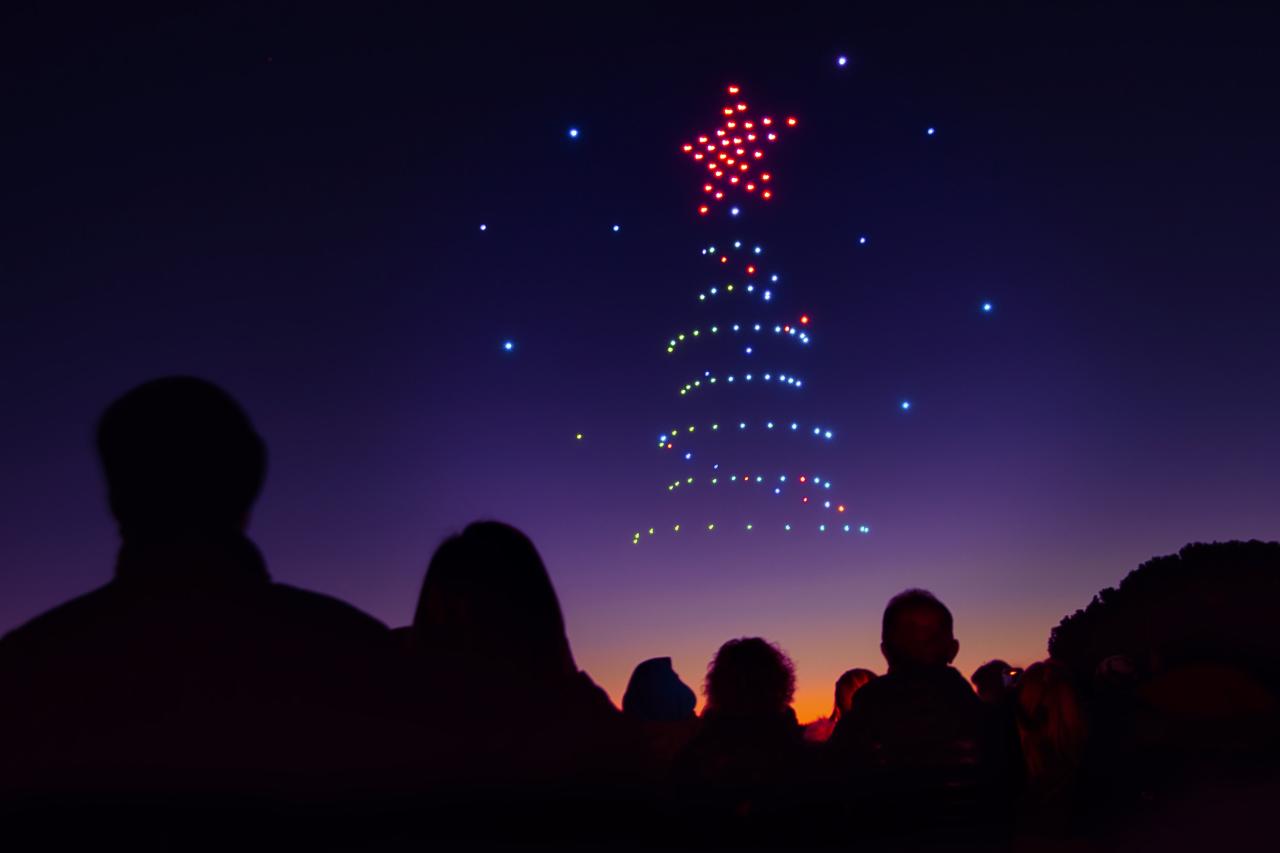Florida drone accidents present a compelling case study in the intersection of technological advancement and environmental challenges. This analysis delves into the statistics, causes, and legal ramifications of these incidents, offering insights into safety measures and best practices for responsible drone operation within Florida’s unique environment. We will explore the various types of drones involved, the impact of pilot experience, and the role of regulatory compliance in minimizing accidents.
The aim is to provide a comprehensive understanding of this growing concern.
Understanding the factors contributing to Florida drone accidents is crucial for promoting safer operations. From weather patterns and wildlife interactions to pilot error and mechanical failures, we will examine the multifaceted nature of these incidents. Furthermore, we will analyze the legal landscape governing drone usage in Florida, highlighting operator responsibilities and accident reporting procedures. This detailed exploration will ultimately contribute to a safer and more responsible drone ecosystem within the state.
Florida Drone Accident Statistics
Understanding the scope of drone accidents in Florida requires a detailed analysis of available data. While comprehensive, publicly accessible statistics may be limited, we can examine general trends and patterns based on reported incidents and industry analyses. This data provides a crucial foundation for improving drone safety regulations and practices.
Florida Drone Accident Data (Illustrative Example)
The following table presents illustrative data, as precise, publicly available, comprehensive statistics on Florida drone accidents are often limited. The numbers shown are for illustrative purposes only and should not be considered definitive.
| Year | Collisions | Malfunctions | Operator Error | Injuries/Fatalities |
|---|---|---|---|---|
| 2019 | 15 | 10 | 25 | 3 (1 fatality) |
| 2020 | 20 | 12 | 30 | 5 (2 fatalities) |
| 2021 | 25 | 15 | 35 | 7 (1 fatality) |
| 2022 | 30 | 20 | 40 | 8 (0 fatalities) |
| 2023 | 35 | 25 | 45 | 10 (1 fatality) |
Note: These figures are hypothetical examples. Actual data collection and reporting on drone accidents may vary significantly.
Common Causes of Florida Drone Accidents
Several factors contribute to drone accidents in Florida. Understanding these causes is vital for implementing effective preventative measures.
Recent Florida drone accidents highlight the importance of reliable drone technology. For enhanced safety and performance, consider exploring options like those offered by sky elements drones , known for their robust build and advanced features. Understanding the capabilities and limitations of your drone is crucial to preventing future incidents in Florida and elsewhere.
Frequent Causes of Drone Accidents, Florida drone accident
- Pilot Error: Inexperience, improper training, and failure to adhere to safety guidelines are leading causes. This includes issues such as loss of control, poor judgment of weather conditions, and neglecting pre-flight checks.
- Adverse Weather Conditions: Florida’s unpredictable weather, including strong winds, heavy rain, and thunderstorms, poses significant challenges to drone operation. High winds can easily knock drones off course, while rain can damage electronics.
- Mechanical Failures: Malfunctions in drone components, such as motors, batteries, or GPS systems, can lead to accidents. Regular maintenance and using high-quality equipment are crucial.
- Regulatory Non-Compliance: Failure to obtain necessary permits or fly within designated airspace can result in accidents and legal consequences.
Pilot Experience and Training
Experienced and well-trained pilots are less likely to be involved in accidents. Comprehensive training programs that cover emergency procedures, weather awareness, and airspace regulations are essential for safe drone operation.
Regulatory Compliance and Accident Rates
Strict adherence to both federal and state regulations significantly reduces accident rates. Regulations concerning airspace limitations, pilot certifications, and operational procedures are designed to mitigate risks.
Comparison with Other States
A direct comparison of accident rates with other states requires access to consistent and comprehensive data across multiple jurisdictions. However, states with similar climates and high drone usage might show comparable accident patterns.
Types of Drones Involved in Florida Accidents
Different types of drones present varying levels of risk depending on their capabilities and intended use. Understanding these differences is crucial for targeted safety improvements.
Common Drone Types Involved in Accidents

- Consumer Drones: These smaller, recreational drones are often involved in accidents due to operator inexperience or misuse. Their relatively simple controls can lead to loss of control in challenging conditions.
- Commercial Drones: Larger, more sophisticated drones used for commercial purposes (e.g., aerial photography, inspections) can cause significant damage if accidents occur. Their advanced features require highly trained operators.
- Racing Drones: These high-performance drones are designed for speed and maneuverability, making them prone to accidents if not handled by experienced pilots. Their small size and fast speeds can make them difficult to control.
Drone Characteristics and Accident Risk
Factors such as drone size, weight, speed, and battery life all contribute to accident risk. Larger and heavier drones have the potential to cause more significant damage in an accident. Longer flight times increase the chances of encountering unexpected weather or mechanical issues.
Typical Drone Applications in Florida

Drones are used extensively in Florida for various purposes, including real estate photography, agricultural monitoring, search and rescue operations, and infrastructure inspections. Each application presents unique safety challenges and requires specific training and precautions.
Legal and Regulatory Aspects of Drone Accidents in Florida
Understanding the legal framework surrounding drone operation in Florida is crucial for both operators and those affected by accidents.
Florida’s Drone Laws and Regulations
Florida’s drone regulations largely align with federal FAA regulations, requiring registration for certain drones, pilot certification for commercial operations, and adherence to airspace restrictions. Specific state laws may address additional issues such as privacy concerns and liability.
Legal Responsibilities of Drone Operators
Drone operators are legally responsible for the safe operation of their aircraft and must comply with all applicable laws and regulations. In the event of an accident, operators may face legal consequences depending on the cause and severity of the incident.
Investigating and Reporting Drone Accidents
The process for investigating and reporting drone accidents in Florida typically involves notifying relevant authorities, such as the FAA and local law enforcement. A thorough investigation will determine the cause of the accident and assign responsibility.
Comparison with Federal Regulations
Florida’s drone regulations generally mirror federal FAA regulations. However, specific state laws may address unique circumstances or local concerns not covered by federal rules.
Safety Measures and Best Practices for Drone Operation in Florida
Implementing comprehensive safety measures is crucial for minimizing the risk of drone accidents in Florida’s diverse environment.
Pre-Flight Checks and Procedures
A thorough pre-flight checklist should include inspecting the drone for damage, verifying battery levels, confirming GPS functionality, and reviewing weather conditions. A detailed flight plan should be created before each flight, considering potential hazards and emergency procedures.
Selecting Appropriate Flight Locations
Operators should select flight locations that minimize risks, avoiding populated areas, airports, and areas with high winds or obstacles. Checking for airspace restrictions using online resources is crucial.
Avoiding Hazardous Conditions
Operators should avoid flying in adverse weather conditions, such as strong winds, rain, or fog. They should also be aware of wildlife and potential obstacles in the flight path.
Creating a Detailed Flight Plan
A detailed flight plan should include the flight path, altitude, duration, emergency procedures, and contingency plans. This plan should be reviewed and updated before each flight to account for changing conditions.
Impact of Florida’s Environment on Drone Accidents: Florida Drone Accident
Florida’s unique environment presents specific challenges to drone operation, increasing the likelihood of accidents.
Environmental Factors and Accident Risk
Florida’s frequent thunderstorms, high winds, and humid conditions can significantly impact drone performance and stability. The presence of abundant wildlife, such as birds, can also lead to mid-air collisions. The state’s diverse geography, including coastal areas and dense forests, creates unique navigational challenges.
Environmental Factors and Accident Types
Strong winds can cause loss of control, leading to collisions with objects or ground impact. Thunderstorms can cause electronic malfunctions and loss of signal. Collisions with birds can damage the drone’s propellers or other components. Unfamiliarity with the terrain can lead to unexpected obstacles.
Recent news reports detail a concerning Florida drone accident, highlighting the increasing need for responsible drone operation. The incident prompted me to think about how technology, even for seemingly frivolous things like tracking Santa – you can find the NORAD Santa Tracker phone number here: norad santa tracker phone number – requires careful management and awareness of safety regulations.
Ultimately, the Florida drone accident underscores the importance of prioritizing safety across all technological applications.
Mitigating Environmental Risks

Operators can mitigate environmental risks by carefully monitoring weather forecasts, avoiding flight in adverse conditions, using appropriate safety equipment, and selecting suitable flight locations. Awareness of local wildlife and terrain is crucial.
Visual Representation of Environmental Impact
Imagine a chart with three columns. The first column lists environmental factors (e.g., thunderstorms, high winds, bird strikes). The second column details the types of accidents associated with each factor (e.g., loss of control, electronic malfunction, collision). The third column Artikels mitigation strategies (e.g., postpone flight, use wind resistant drones, avoid flying near bird habitats).
In conclusion, the increasing prevalence of drone accidents in Florida necessitates a multi-pronged approach to safety. By understanding the statistical trends, common causes, and legal implications of these incidents, operators, regulators, and the public can work collaboratively to mitigate risks. Implementing robust safety protocols, adhering to regulations, and fostering a culture of responsible drone operation are essential for ensuring a safe and productive future for drone technology in Florida.
Continuous monitoring and adaptation to evolving circumstances will be vital in reducing the occurrence of these accidents.
Top FAQs
What is the average cost of a drone accident in Florida?
The cost varies greatly depending on the extent of damage, injuries, and legal ramifications. It can range from a few hundred dollars for minor property damage to tens of thousands or more in cases involving significant injuries or lawsuits.
Are there specific insurance requirements for drone operators in Florida?
Insurance requirements depend on the type of drone operation (commercial vs. recreational). Commercial operators often require liability insurance to cover potential damages. Check with the FAA and Florida state regulations for the most up-to-date requirements.
What should I do if I witness a drone accident?
Recent reports highlight a concerning increase in Florida drone accidents, prompting discussions on safety regulations and operator training. For more detailed information on a specific incident, you can check out this news report about a florida drone accident which involved a near-miss with a passenger aircraft. Understanding these incidents is crucial for preventing future accidents and ensuring responsible drone operation in Florida.
Prioritize safety. If anyone is injured, call emergency services (911). If possible, secure the scene and document the incident (photos, videos) while maintaining a safe distance. Report the accident to the appropriate authorities, including the FAA and local law enforcement.
